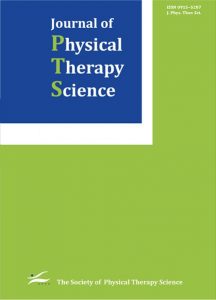Publications

An analysis on muscle tone of lower limb muscles on flexible flat foot
Authors: Gi-Mai UM, Joong-San Wang, Si-EUn Park
Affiliations: Department of Physical Therapy, Yeoju Institute of Technology: 338 Sejong-ro, Yeoju-si, Gyeonggi-do, Republic of Korea; Department of Physical Therapy, Yongin University, Republic of Korea
Journal: Journal of Physical Therapy Science - October 2015, Volume 27, Issue 10, Page 3089–3092 (DOI: 10.1589/jpts.27.3089)
-
Field & Applications:
- Medical
- Orthopedics
Purpose: The aim of this study was to examine differences in the muscle tone and stiffness of leg muscles according to types of flexible flat foot.
Subjects and Methods: For 30 subjects 10 in a normal foot group (NFG), 10 in group with both flexible flat feet (BFFG), and 10 in a group with flexible flat feet on one side (OFFG), myotonometry was used to measure the muscle tone and stiffness of the tibialis anterior muscle (TA), the rectus femoris muscle (RF), the medial gastrocnemius (MG), and the long head of the biceps femoris muscle (BF) of both lower extremities.
Results: In the measurement results, only the stiffness of TA and MG of the NFG and the BFFG showed significant differences. The muscle tone and stiffness were highest in the BFFG, followed by the OFFG and NFG, although the difference was insignificant. In the case of the OFFG, there was no significant difference in muscle tone and stiffness compared to that in the NGF and the BFFG. Furthermore, in the NFG, the non-dominant leg showed greater muscle tone and stiffness than the dominant leg, although the difference was insignificant.
Conclusion: During the relax condition, the flexible flat foot generally showed a greater muscle tone and stiffness of both lower extremities compared to the normal foot. The stiffness was particularly higher in the TA and MG muscles. Therefore, the muscle tone and stiffness of the lower extremity muscles must be considered in the treatment of flat foot.
Keywords: Flexible flat foot, Muscle tone, Stiffness


